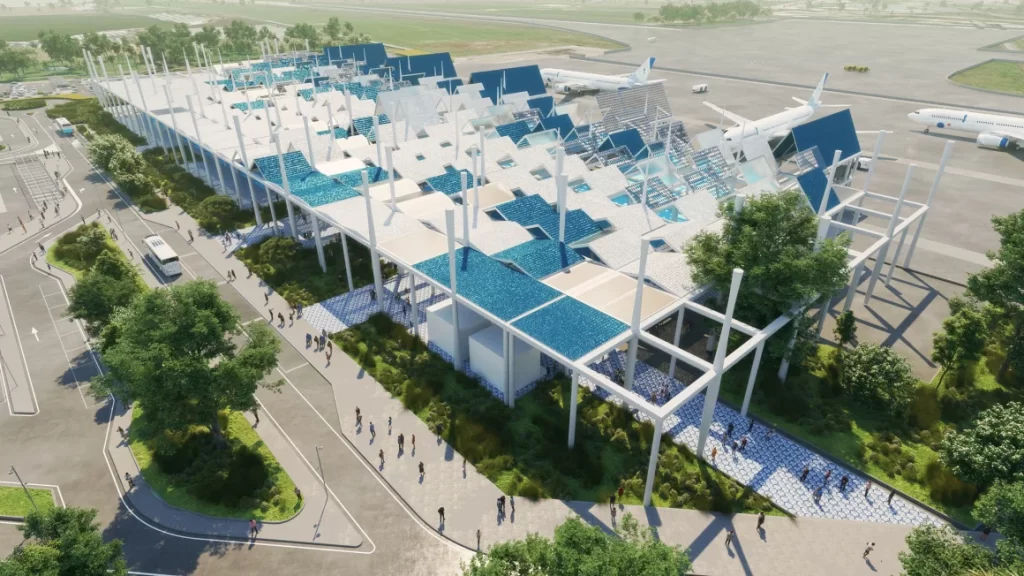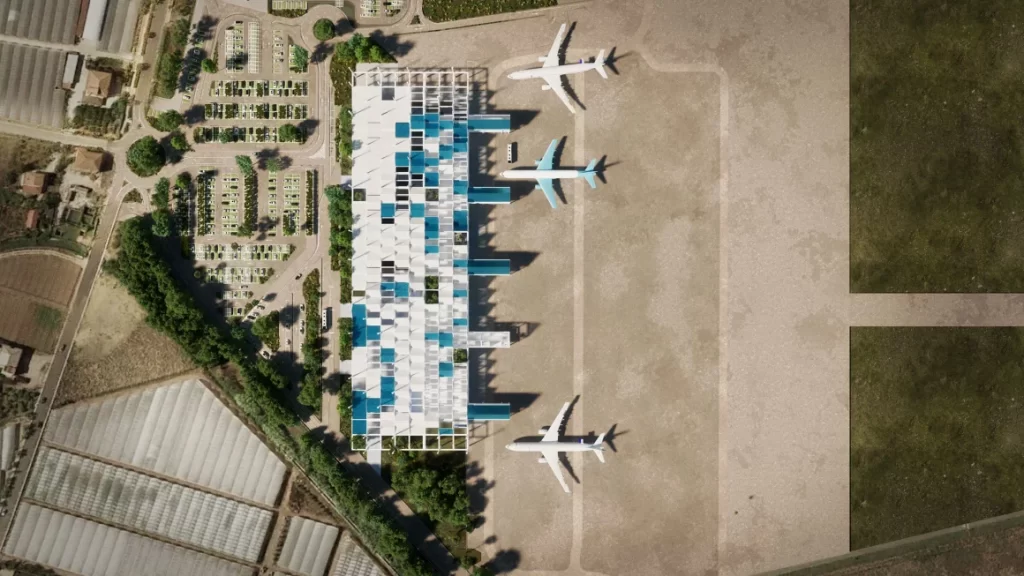News
Unlocking the Amalfi Coast: Salerno Costa d’Amalfi Airport’s Arrival
Italy’s beloved Amalfi Coast, with its breathtaking landscapes and charming villages, is on the cusp of a transformative journey as it prepares to welcome the Salerno Costa d’Amalfi Airport. Set to open its gates in July, this airport is poised to rewrite the narrative of accessibility to one of Italy’s most iconic destinations, promising a new era for travelers seeking the allure of the Amalfi Coast. Let’s find out with nowglas.

The arrival of Salerno Costa d’Amalfi Airport is a significant milestone, particularly considering the long-standing belief that the difficulty of reaching a destination directly correlates with its beauty. In this case, the Amalfi Coast is breaking away from tradition to offer a more convenient and direct route, inviting travelers to explore its mesmerizing coastal wonders.
While technically a reopening rather than an entirely new venture, the airport has a storied history dating back to its initial construction in 1926. Over nearly a century, it has played diverse roles, from a military airport and flying school to a firefighting hub and private airport. In 2007, it underwent modifications to accommodate commercial flights, witnessing intermittent periods of operation until its temporary closure in 2016.

The revival of Salerno Costa d’Amalfi Airport, scheduled for July 11, will be marked by the commencement of commercial flights, primarily operated by Volotea, a prominent Spanish airline with a significant presence in Italy. The airport’s operations are initiating cautiously, with ongoing development expected to continue until its targeted completion in 2026.
Volotea’s initial routes will connect the Amalfi Coast with Nantes in France and Cagliari in Sardinia, commencing in July, followed by additional routes to Verona and Catania in September. Discussions are underway with other noteworthy airlines to expand the airport’s reach, according to GESAC, the entity overseeing its management.
The ongoing expansion efforts include the extension of the runway to 2,000 meters (6,562 feet), the addition of facilities, and aircraft stands. Development will proceed alongside flight operations, with plans for a new passenger terminal to be realized by 2026-2027. The design of this 16,000 square meter (172,222 square feet) terminal will be entrusted to the Dutch company Deerns, recognized for its work on international airports.

What sets this project apart is the emphasis on environmental responsibility and local integration in the terminal’s design. Natural and sustainable materials will be utilized, and the terminal’s roof will feature photovoltaic panels to generate energy, contributing to reduced CO2 emissions. The second phase of development will witness a further extension of the runway to 2,200 meters (7,218 feet).
While awaiting the completion of the passenger terminal, a new general aviation terminal, catering primarily to private planes, will be established by the next year. This comprehensive development plan aims to process six million passengers annually by 2043, alleviating the strain on Naples’ Capodichino International Airport, which saw a record 12.4 million passengers in 2023.
Carlos Muñoz, founder and president of Volotea, underscored the significance of the airport’s opening, describing it as “an important moment for the region.” Roberto Barbieri of GESAC echoed this sentiment, referring to it as “an incredible flywheel for the development of tourism in our region.”
Despite concerns over overtourism and associated restrictions, locals, especially those involved in the tourism industry, are welcoming the airport with open arms. Fausto Salsano, owner of Vietri Centro B&B in Vietri sul Mare, the first village on the Amalfi Coast, anticipates the airport’s positive impact, foreseeing “an important growth rate in all sectors.”
The Salerno Costa d’Amalfi Airport emerges not merely as an infrastructure project but as a catalyst for growth, promising a harmonious blend of accessibility, sustainability, and economic prosperity for the Amalfi Coast and the broader region. It represents a paradigm shift, challenging conventional notions about the trade-off between beauty and accessibility, and instead, aiming to enhance the overall experience for travelers and locals alike.
As Italy’s Amalfi Coast opens its arms to a new chapter in aviation history, the allure of its picturesque landscapes and cultural treasures is set to captivate a broader audience, fostering a sustainable and inclusive approach to tourism in this iconic region. The airport’s strategic development and commitment to environmental considerations signal a promising future for the Amalfi Coast, inviting the world to explore its wonders with greater ease and convenience.
As the Salerno Costa d’Amalfi Airport prepares to welcome its first flights, the Amalfi Coast stands at the threshold of a promising future. Beyond the convenience it offers, the airport embodies a commitment to environmental responsibility, integrating seamlessly with the local landscape. With phased developments and a focus on sustainability, this project represents more than an aviation infrastructure; it signifies a paradigm shift, challenging traditional notions and inviting the world to explore the wonders of the Amalfi Coast with newfound ease and inclusivity. As travelers and locals eagerly anticipate this transformative development, the allure of the Amalfi Coast is set to captivate a broader audience, fostering a harmonious blend of accessibility and environmental consciousness.
See more: Budget 2024: Cigarette Prices Soar to Over £16 in UK
